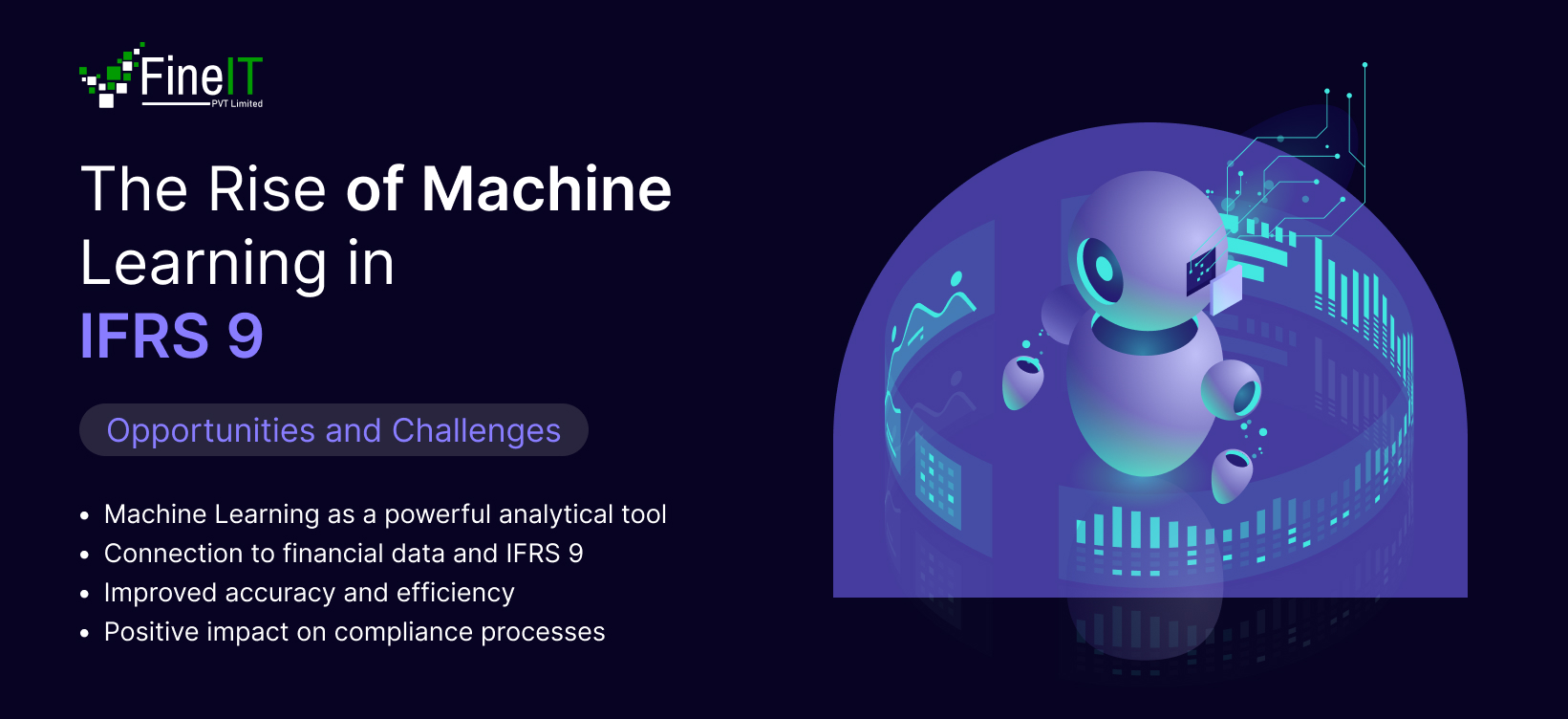The International Financial Reporting Standard 9 (IFRS 9) has transformed the way companies assess and report credit losses. A key aspect of IFRS 9 is the Expected Loss (EL) model, which requires companies to estimate credit losses over the entire life of a financial instrument. While this approach improves transparency and risk management, it can also be complex and time-consuming, especially for large financial institutions.
This is where Machine Learning (ML) and Artificial Intelligence (AI) are emerging as potential game-changers in IFRS 9 implementation. ML algorithms can analyze vast amounts of historical data to identify patterns and relationships that might be missed by traditional methods. This can lead to more accurate and efficient credit risk assessments, ultimately impacting how companies comply with IFRS 9.
Opportunities of ML for IFRS 9:
- Automated Data Analysis: ML algorithms can quickly process large datasets of financial information, such as loan histories, economic indicators, and customer demographics. This can automate tasks like data cleaning, feature engineering, and model training, freeing up valuable time for financial professionals.
- Improved Model Accuracy: ML models can learn from vast amounts of data and identify complex relationships that might be overlooked by traditional statistical methods. This can lead to more accurate EL models, which provide a more realistic picture of potential credit losses.
- Enhanced Efficiency: Automating data analysis and model building with ML can significantly improve efficiency in IFRS 9 compliance processes. This allows teams to focus on strategic analysis and decision-making.
- Real-time Risk Assessment: ML models can be continuously updated with new data, allowing for real-time risk assessment. This enables companies to proactively manage credit risk and make informed adjustments to their financial strategies.
Challenges of ML for IFRS 9:
- Data Quality and Availability: The effectiveness of ML models heavily relies on the quality and completeness of the data used for training. Companies need to ensure their data is accurate, consistent, and free from bias.
- Model Explainability and Transparency: Understanding how ML models reach their conclusions can be difficult. This lack of transparency can raise concerns for regulators and auditors who need to verify the validity of EL models.
- Regulatory Uncertainty: Regulatory guidance on using ML in IFRS 9 compliance is still evolving. Companies need to be aware of potential regulatory risks and ensure their ML practices are compliant with current and future regulations.
- Technical Expertise: Implementing and maintaining ML models requires a certain level of technical expertise. Companies may need to invest in training or hire data scientists to utilize ML effectively.
Moving Forward with ML and IFRS 9:
Despite the challenges, the potential benefits of ML for IFRS 9 compliance are significant. As ML technology continues to develop, we can expect to see even more innovative applications in this area. Here are some steps companies can take to leverage ML for IFRS 9 while managing risks:
- Invest in Data Quality: Prioritize data governance and ensure data used for ML is accurate, complete, and unbiased.
- Focus on Model Explainability: Choose or develop ML models that provide interpretable results, allowing for better understanding of how credit risk assessments are made.
- Stay Updated on Regulations: Monitor regulatory developments around ML use in IFRS 9 compliance and adapt your practices accordingly.
- Develop Internal Expertise: Build skills within your team or collaborate with external data science professionals to successfully implement and maintain ML models.
By embracing ML while managing the associated challenges, companies can achieve a more efficient and accurate approach to IFRS 9 compliance. This can lead to improved risk management, better financial reporting, and ultimately, a more robust financial system.
